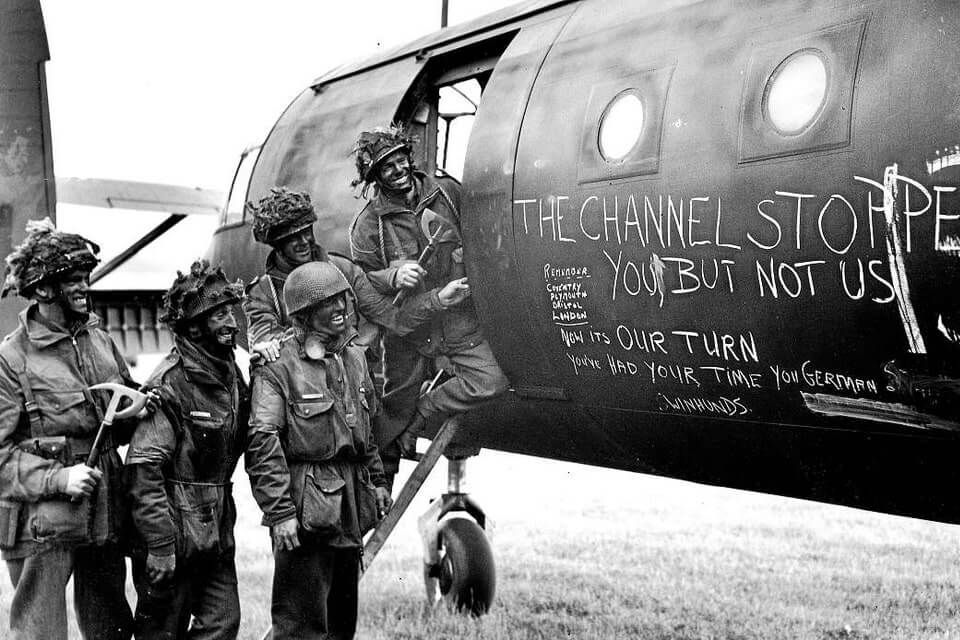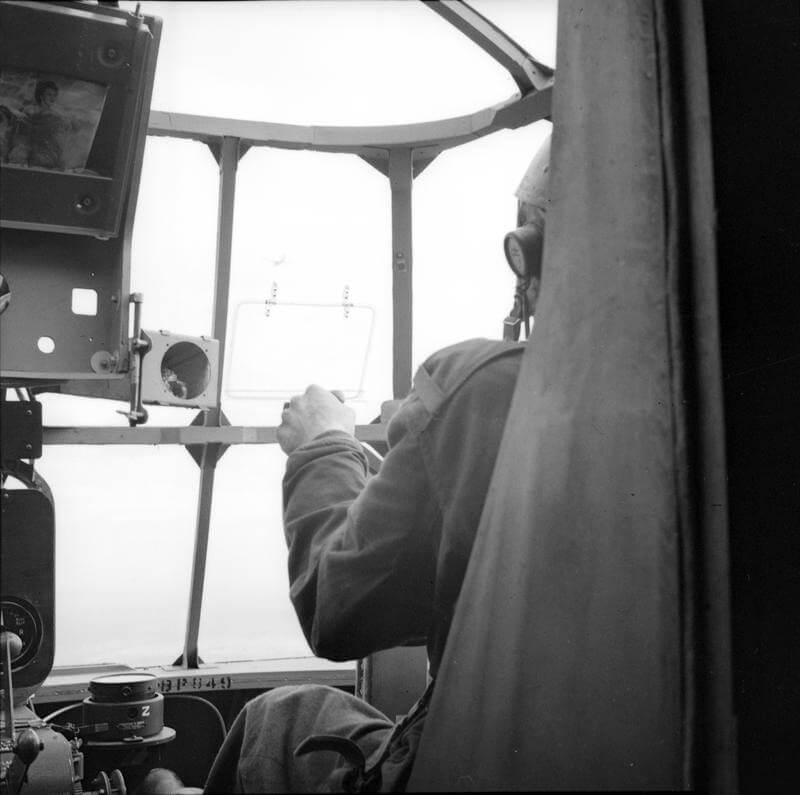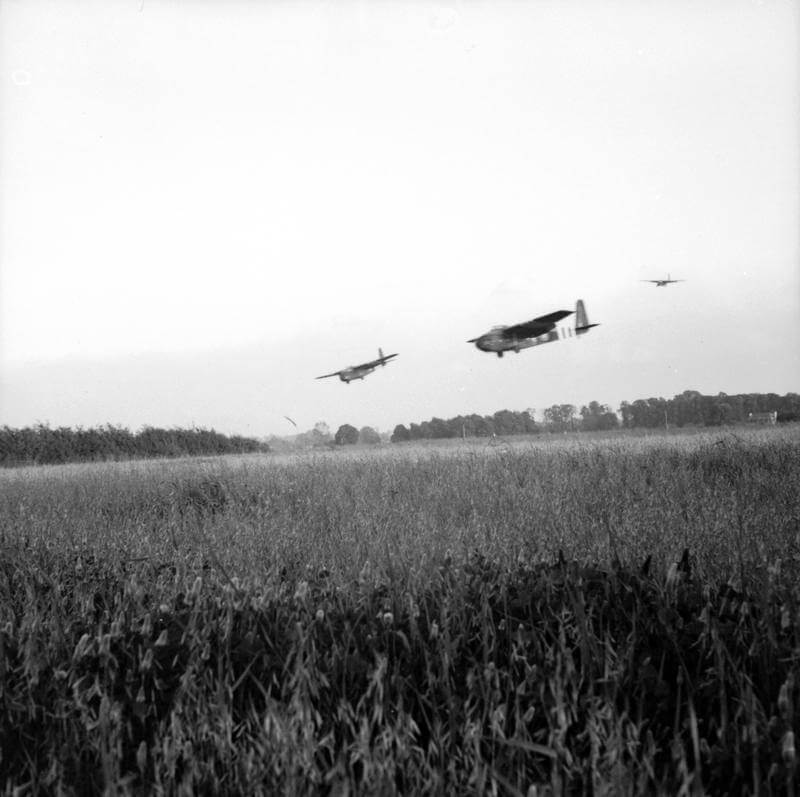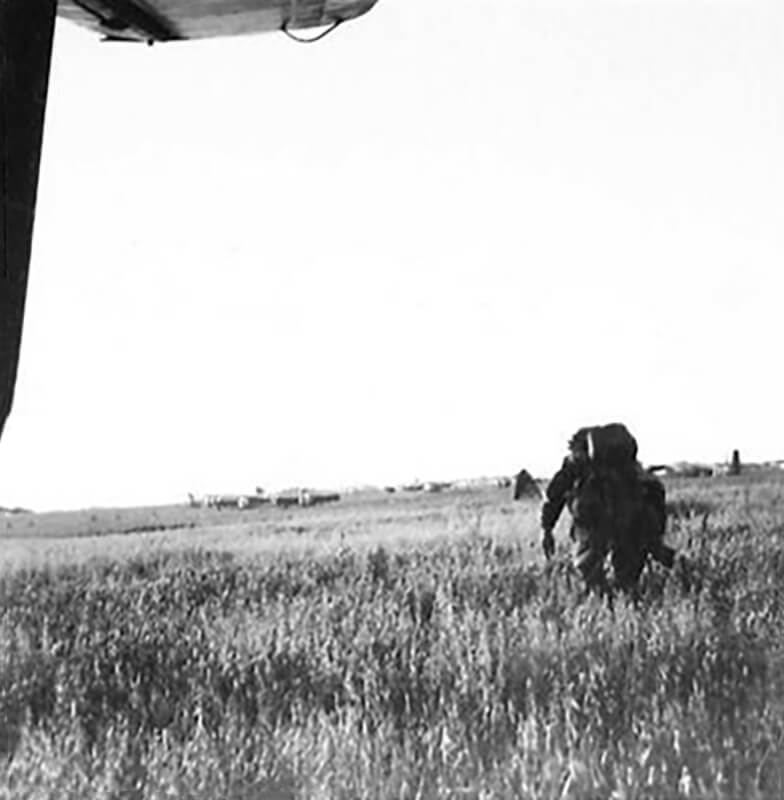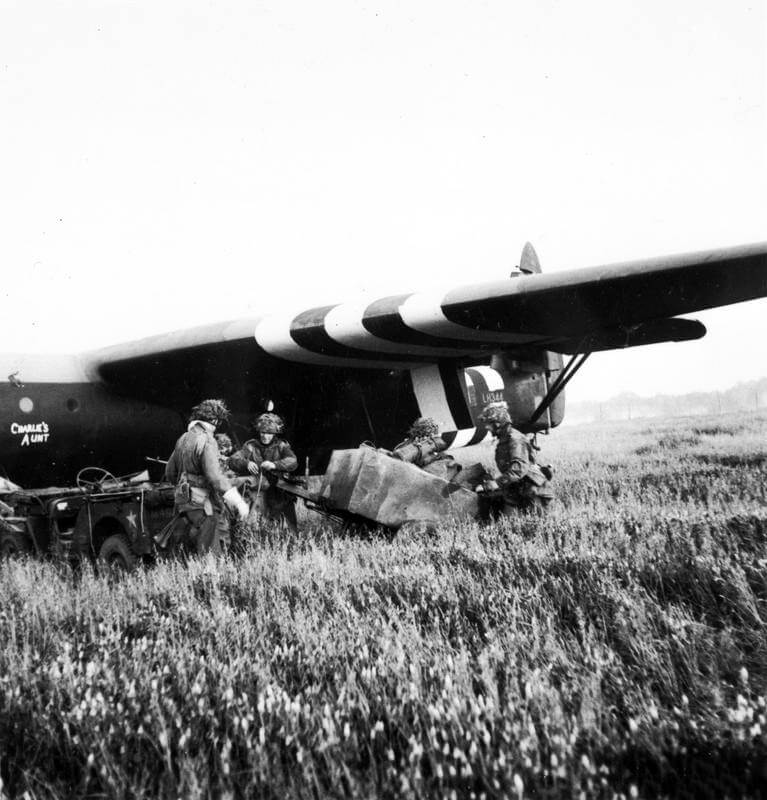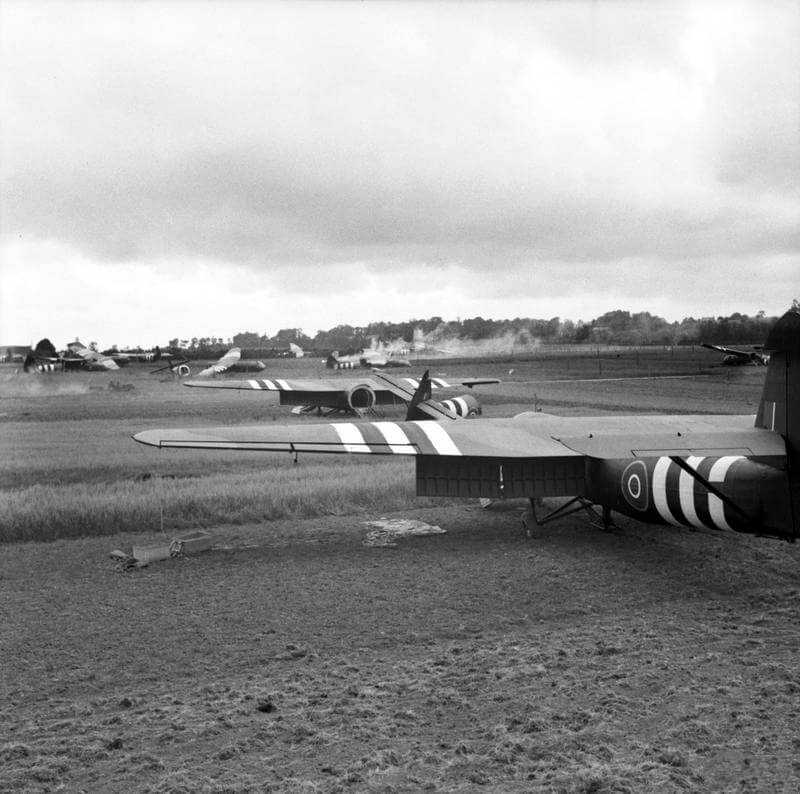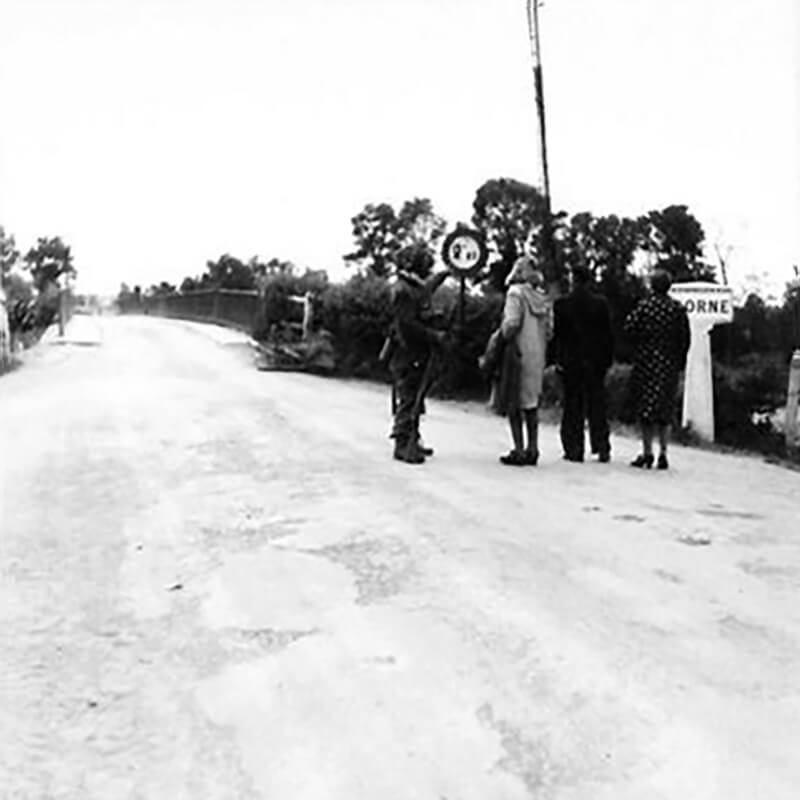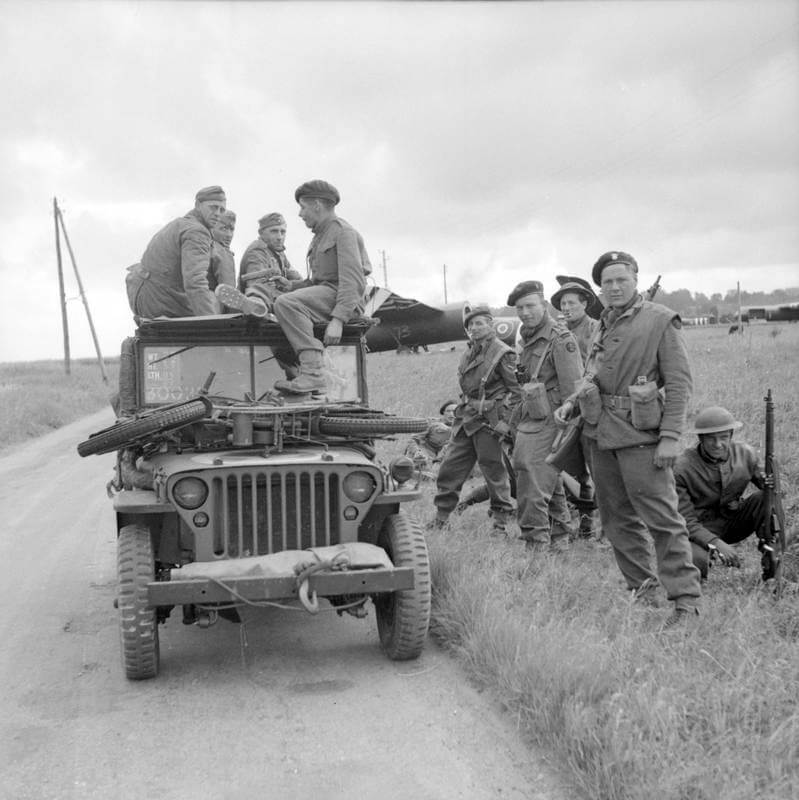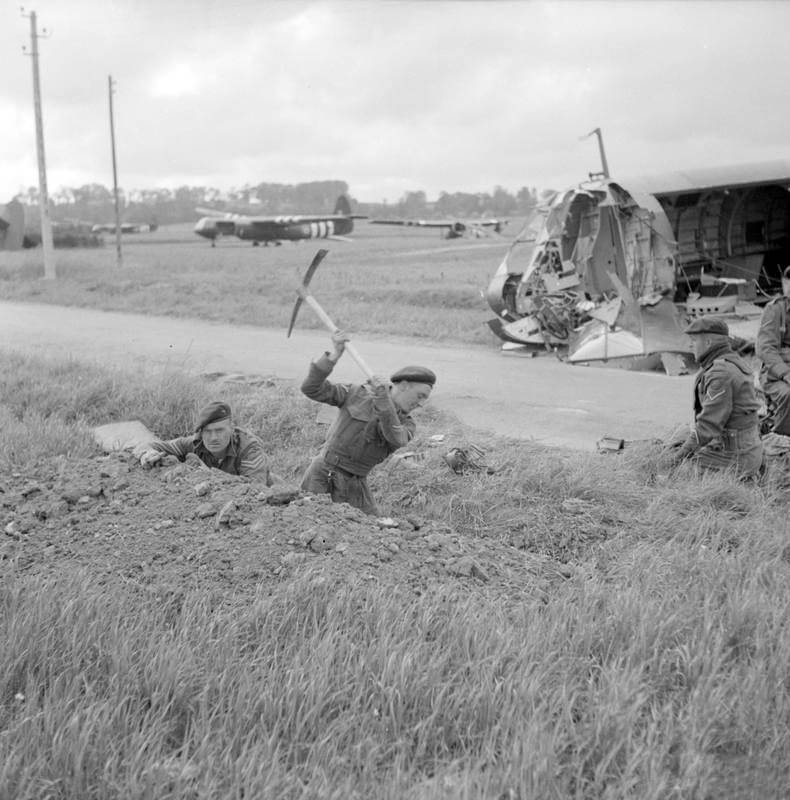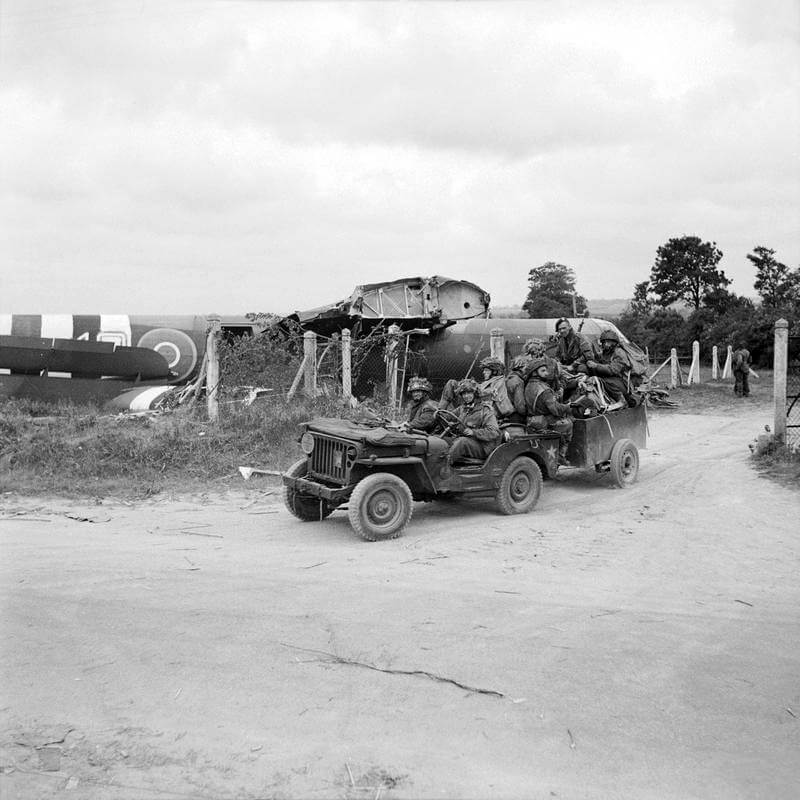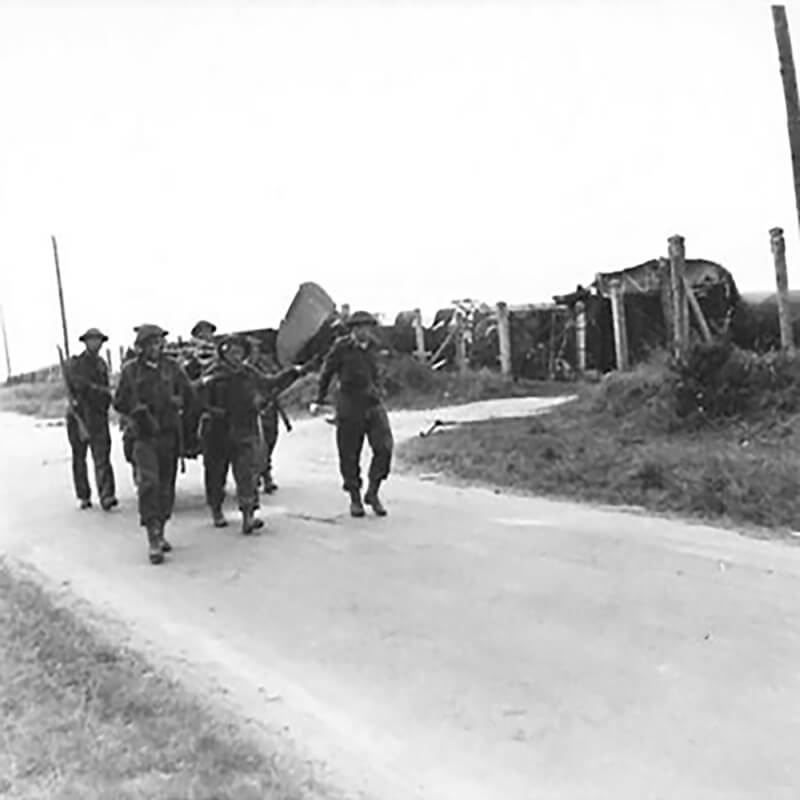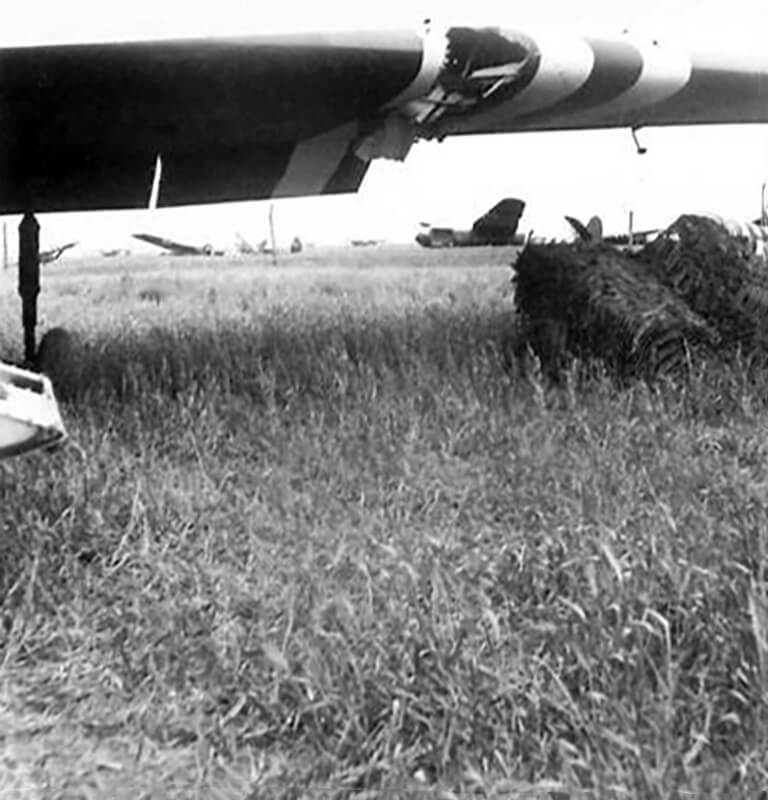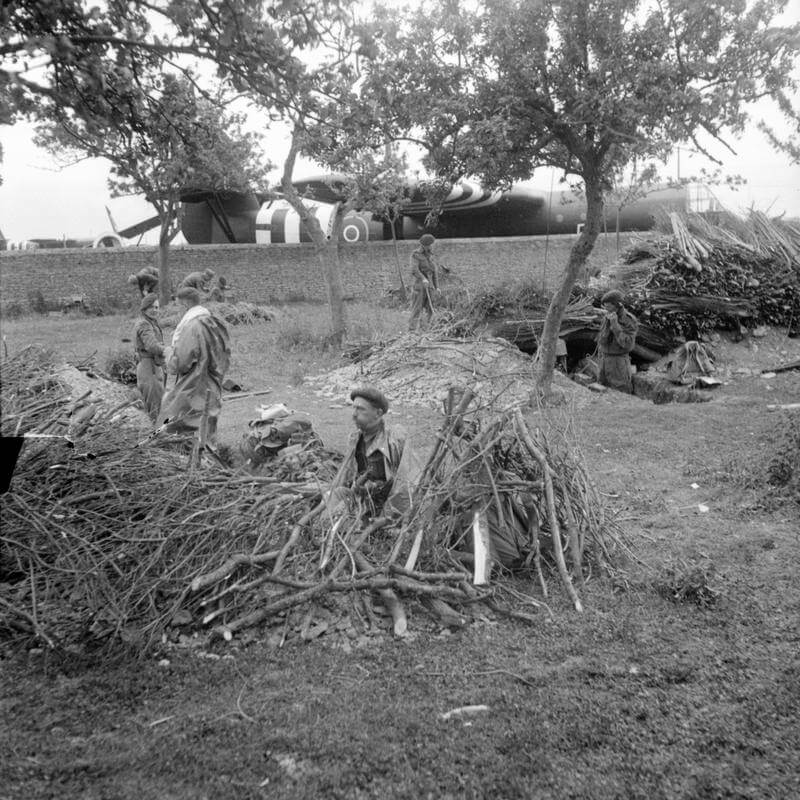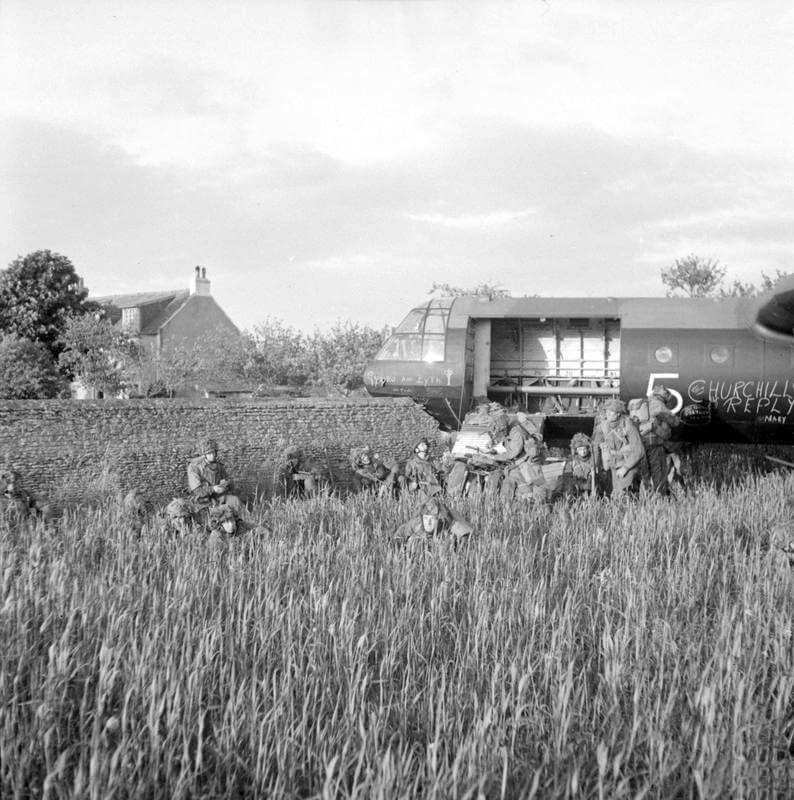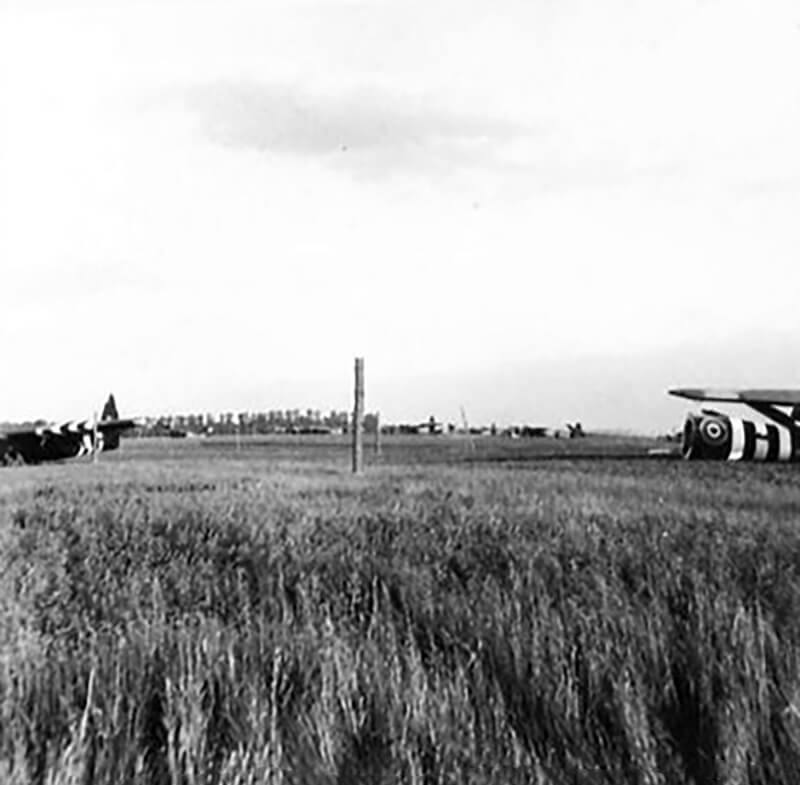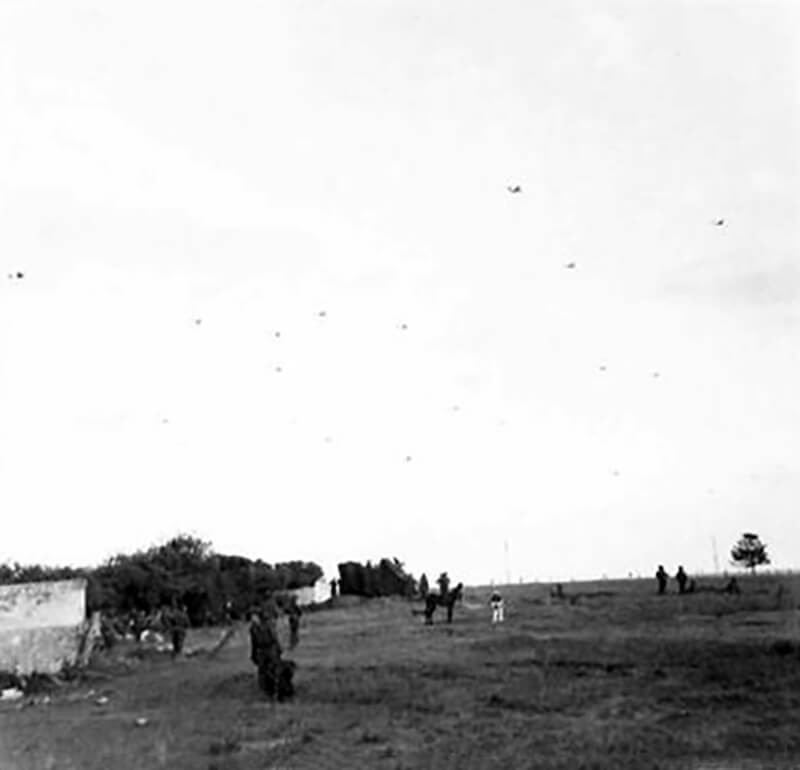| Page Created |
| November 8th, 2023 |
| Last Updated |
| June 6th, 2024 |
| Great Britain |
 |
| Included Operations |
| Coup de Main Operation Tonga Operation Mallard Operation Rob Roy |
| Operational Areas |
| Special Air Service 6th Airborne Division Band Beach Sword Beach Juno Beach Gold Beach Omaha Beach Utah Beach 82nd Airborne Division 101st Airborne Division |
| Operations within Operation Overlord |
| Operation Gambit Operation Neptune Operation Perch Operation Epsom Operation Charnwood Operation Atlantic Operation Goodwood Operation Bluecoat Operation Totalize |
| June 6th, 1944 – |
| Coup de Main Operation Tonga Operation Mallard Operation Rob Roy |
| Objectives |
- to secure the Eastern flank of the invasion zone, by occupying and dominating the high ground between the River Orne and the River Dives.
- Capture the Bridges over the Caen Canal and the Orne River By Coup de Main
- Destroy the guns at the Merville Battery
- Destroy the River Dives Bridges
| Operational Area |
Area between the Caen Canal and the river Dives, Normandy, France
| Unit Force |
- 6th Infantry Division
- 3rd Parachute Brigade
- 5th Parachute Brigade
- 6th Airlanding Brigade
- Divisional Troops
- 22nd Independent Parachute Company
- 6th Airborne Armoured Reconnaissance Regiment
- 6th Airborne Divisional Signals
- 6th Airborne Divisional Workshop
- Royal Artillery
- 211th Battery, 53rd Airlanding Regiment
- 3rd Airlanding Attack Battery
- 4th Airlanding Attack Battery
- Royal Army Medical Corps
- 224th Parachute Field Ambulance
- 225th Parachute Field Ambulance
- 195th Airlanding Field Ambulance
- Royal Army Service Corps
- 716th Light Composite Company
- 398th Composite Workshop
- Support Units Assault Phase Command
- Army Air Corps
- No. 1 Wing, Glider Pilot Regiment
- No. 2 Wing, Glider Pilot Regiment
- Army Air Corps
| Opposing Forces |
- 711. Infantrie-Division
- 716. Infantrie-Division
- 21. Panzer-Division
| Operation |
| Pathfinders |
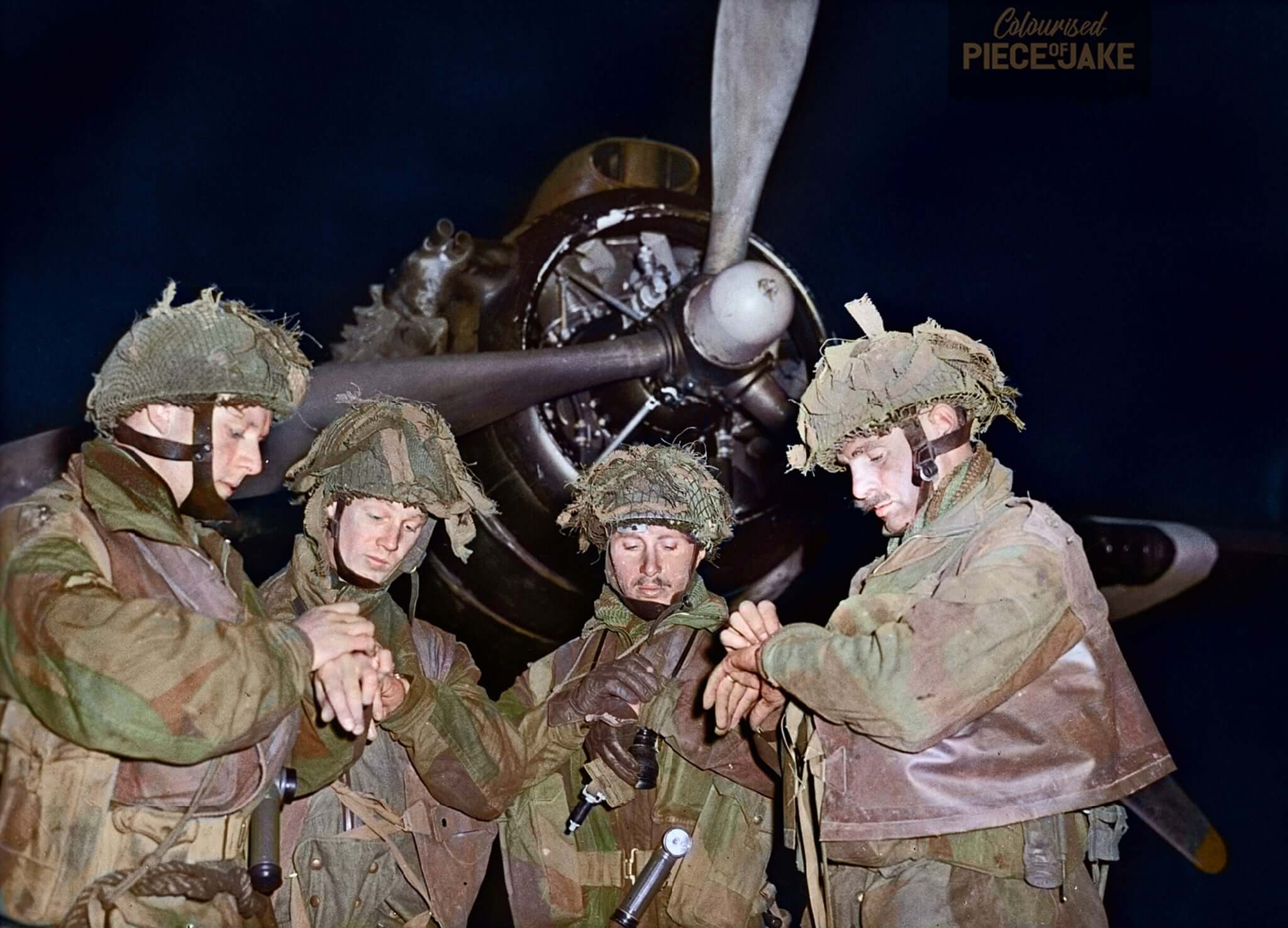
Two sticks of pathfinders from the 22nd Independent Parachute Company are supposed to be dropped on each designated dropping zone. However, in each case, only one stick is accurately dropped. In three instances, multiple runs over the target are needed to deploy all the troops, with one aircraft completing its drop on the third run, 14 minutes later. All the radar and visual beacons for dropping zone “V” (1st Canadian and 9th Parachute Battalions) are lost or damaged. Additionally, an aircraft carrying a pathfinder team intended for dropping zone “K” (HQ 3 Parachute Brigade and 8th Parachute Battalion) mistakenly drops its passengers on dropping zone “N” (5 Parachute Brigade).
Unaware they are on the wrong dropping zone, the “K” pathfinders set up their beacons and lights on dropping zone “N”. Consequently, fourteen sticks, along with their jettison containers, of Headquarters 3 Parachute Brigade and 8th Parachute Battalion are dropped onto dropping zone “N” before the “N” pathfinders, who had been dropped some distance away, arrive and erect the correct beacons about 30 minutes later. Additionally, some of the pathfinder personnel set up their lights in standing crops, making them invisible from the air.
| 5th Parachute Brigade |
The seizure of the bridges over the Caen Canal and the River Orne is executed by a glider-borne coup de main party consisting of six platoons of the 2nd Battalion, Oxfordshire and Buckinghamshire Light Infantry, under the command of Major R. J. Howard, with a detachment of Royal Engineers. They are supported by the 7th Parachute Battalion, which drops half an hour later. Of the six gliders, five land exactly on time at 00:20 on 6th June 1944, four with great accuracy and one half a mile away. The sixth glider lands on a bridge over the River Dives, seven miles away from the objective.
The surprise achieved in this initial landing, coupled with the speed of the assault, results in the immediate overrunning of the enemy’s defences. Both bridges are captured intact, and a close bridgehead is established on the western bank. Of the 131 aircraft allocated to 5th Parachute Brigade, two become unserviceable at the airfield and are unable to take off, while six fail to reach Normandy, including five Stirlings later reported missing. The flight conditions are challenging, with cloud cover between 4,000 and 6,000 feet, no moon, average visibility under 4,500 metres, and winds of fifteen to thirty kilometres an hour from the west. However, the crews carrying 5th Parachute Brigade benefit from using the battle for the bridges as a landmark, resulting in fairly accurate drops, although some sticks are dropped short of the target. Of the 750 jettison containers carried, 702 are dropped.
The drop of the 7th Parachute Battalion is scattered, but by 03:00 hours, 40 percent of the battalion has reached the bridges, with more men arriving throughout the day. The battalion assumes responsibility for the position on arrival and enlarges the bridgehead on the western bank to a depth of 700 metres. Enemy countermeasures, consisting of isolated and uncoordinated counterattacks by tanks, armoured cars, and infantry, begin to develop at 05:00 hours and continue with increasing intensity throughout 6th June. The 7th Parachute Battalion, along with the glider force, successfully repels these attacks. At 19:00 hours, Major-General T. G. Rennie, Commander of the 3rd British Infantry Division, arrives at the bridges and orders his troops to take over from the 7th Parachute Battalion, completing the relief by about 01:00 hours on 7th June.
During the day, the 7th Parachute Battalion engages in a “naval battle” with two German coastal craft that had retreated from Ouistreham and were heading up the canal to Caen. The first indication the Germans have that the Allies control the bridges is when British troops open fire. The vessels go aground, and the crews are captured. The Germans also launch an unsuccessful air attack on the bridge, with a 500 kilogram bomb hitting the bridge but bouncing off without exploding.
Meanwhile, the 12th and 13th Parachute Battalions drop at 00:50 and are also scattered. When they move from their rendezvous points, each battalion is only about 60 percent strong, though additional parties join up during the day. The 12th Parachute Battalion seizes the Le Bas de Ranville area, and the 13th Parachute Battalion secures the Ranville-Le Mariquet area. The Germans react swiftly, attacking Ranville almost immediately, but are repulsed, resulting in the capture of several enemy prisoners of war and the destruction of one German tank.
At 10:45, another attack, supported by self-propelled guns, penetrates the village but is beaten off by the 12th Parachute Battalion, with the 4th Air-Landing Anti-Tank Battery accounting for three self-propelled guns and one tank. By 13:00, enemy attacks intensify, putting the positions of the 12th and 13th Parachute Battalions in a critical state. Consequently, the leading commando of 1st Special Service Brigade is diverted to assist the airborne troops and is not released until the evening. This necessary and successful diversion curtails the offensive action of 1st Special Service Brigade, delaying their advance into Franceville Plage.
In the fighting at Ranville, there are many gallant actions, but one stands out. Lieutenant J. A. N. Sims of the 12th Parachute Battalion is in charge of a position held by a few men. German infantry, supported by two self-propelled guns, attacks. Sims knocks out one gun, but the other gun kills his men one by one at point-blank range. However, Sims holds his ground until the gun withdraws, leaving him with only three men.
| 3rd Parachute Brigade |
The advance party of 3rd Parachute Brigade, including elements of Brigade headquarters, each battalion, and one company of 1st Canadian Parachute Battalion, is tasked with clearing dropping zone “V” of enemy posts. However, issues arise with the 14 Armstrong Whitworth Albemarles carrying the advance party. Two aircraft drop only three and nine troops respectively; a third aircraft drops six men as it crosses the coast and only four over the dropping zone; and a fourth aircraft, under enemy fire, needs a second run, dropping late. Two more aircraft report “Gee” failures: one loses time flying along the coast to find the entry point, and the other returns to base after being hit by flak on its seventh run-over.
In one of the latter aircraft is Major W. A. C. Collingwood, brigade major of 3rd Parachute Brigade. As the aircraft is hit, he is knocked through a hole and hangs underneath the fuselage for half an hour, suspended by his static line wound around his leg, along with a 27 kg kitbag. He is eventually pulled back into the aircraft and arrives in Normandy by glider later that day.
Most of the pathfinder equipment for dropping zone “V” is damaged, leading to only two green lights being exhibited when the main body arrives. Few crews see these lights, hampered further by dust and smoke from the bombing of the Merville battery by the Avro Lancasters. As a result, the main body has a very scattered drop, with Brigadier Hill and several sticks of 1st Canadian and 9th Parachute Battalion being dropped near the River Dives. This party suffers heavy casualties from friendly bombing later in the day, with Brigadier Hill being slightly wounded.
Of the gliders carrying the brigade’s heavy equipment, three break away from their tugs in cloud off the French coast, while the remainder release to the north of the landing zone. Three gliders land on dropping zone “N”, with the others scattered about 2.4 kilometers to the southeast of their correct landing zone.
The 9th Parachute Battalion, supported by anti-tank artillery, forward observation bombardment units, Royal Engineers, and field ambulances, is tasked with destroying the Merville coastal battery, seizing and holding the high ground at Le Plein, blocking roads from Franceville Plage to Le Plein, and capturing a German naval headquarters at Sallenelles. The battalion drops at 00:50 over a large area, and by 02:45, only 150 out of 700 personnel have assembled, lacking much of their equipment and support units.
Despite these setbacks, the battalion plans a direct assault on the battery. Three Horsa Gliders carrying 58 officers and men of the battalion, along with one officer and seven Royal Engineers, are supposed to land within the battery’s defenses, guided by 3-inch mortar flares. However, due to instrument trouble and the lack of flares, only one glider lands close to the battery, with the other landing 4.8 kilometres away. Despite these challenges, the battalion penetrates the minefields and outer wire defenses, overrun the battery, destroying two guns completely and rendering the other two useless for 48 hours. They suffer 65 casualties out of the assaulting 150 and capture 22 enemy soldiers, with the rest of the 200-strong German garrison being killed or wounded.
Following this, the battalion finds Le Plein strongly held by the enemy. With their strength reduced to approximately one hundred all ranks; they capture half the village before both sides settle into a stalemate. On the afternoon of 7th June, No. 3 Commando arrives, and a combined airborne-commando attack forces the enemy to withdraw.
The 1st Canadian Parachute Battalion is tasked with destroying the bridges at Varaville and Robehomme and forming a bridgehead in the Bois de Bavent area. Despite being dropped some distance from the dropping zone and encountering slight opposition, the primary tasks are successfully completed. The battalion then reverts to brigade control and occupies a position in the Le Mesnil area.
The 8th Parachute Battalion is assigned to destroy two bridges at Bures and one east of Troarn, then form a bridgehead by occupying an area south of Le Mesnil. Their drop is scattered, with some sticks landing in the 5th Parachute Brigade’s area, causing separation of Royal Engineer detachments. They proceed independently to their objectives. At Bures, they link up with the 8th Parachute Battalion’s advance elements, successfully blowing both bridges. At Troarn, the leading elements encounter resistance on the town’s outskirts. Major J.C.A. Roseveare and his engineer detachment, mounted in a jeep and trailer, rush through the town, firing blindly and taking heavy fire from the Germans. They encounter a barbed wire obstacle at a level crossing, take 20 minutes to cut themselves free, and successfully blow the bridge. They then ditch the jeep and return to Le Mesnil on foot. The 8th Parachute Battalion later widens the gap in the bridge and moves north to occupy their position in the bridgehead.
| Glider Landings |
Headquarters of the 6th Airborne Division lands by glider on the main landing zone in the Ranville area at 03:35, although a few gliders are scattered. They move to the Le Bas de Ranville area. Contact with Headquarters, 5th Parachute Brigade, is established at 05:00, and with 3rd Parachute Brigade at 12:35. Enemy pressure gradually increases during the morning, culminating in an attack on Ranville at 13:00. By 13:5, 1st Special Service Brigade has crossed the bridges, coming under the command of 6th Airborne Division, and the situation is brought under control. By 17:00, it is confirmed that the Merville battery has been destroyed, the bridges at Varaville, Robehomme, Troarn, and Bures have been blown, and 1st Canadian Parachute Battalion is established in the area of Le Mesnil.
6th Air-Landing Brigade, less one battalion, the Airborne 181 Armoured Reconnaissance Regiment, and 211th Light Battery, Royal Artillery, land by glider on the Ranville and “W” landing zones at 21:00 without incident. Few casualties are sustained, either by enemy action or from crash landings, and all obstructions have been removed as planned by the sappers of 5th Parachute Brigade. A few days after landing, a Frenchman is observed laboriously digging holes in the fields on the landing zone and erecting large poles. When asked why, he replies that the Germans had paid him to do it and no one had told him to stop.
Of the eighty-five gliders of the Division, excluding the bridge and battery assault gliders which landed by night, the summary is as follows: fifty-two gliders land correctly on the landing zone, six gliders land within 3.2 kilometres of the landing zone, ten gliders land over 3.2 kilometres from the landing zone, and seventeen gliders are missing. Of the seventeen missing gliders, three land in England, and one in the sea, with personnel from all four joining the Division later.
It is impossible to give the accurate strength of units in the first few hours of darkness, but the battalions of 3rd Parachute Brigade have to carry out their tasks at well below 30 percent strength. In the case of 5th Parachute Brigade, some sixteen men are killed and eighty wounded during the drop, with 432 personnel finally missing after rallying is complete, though a substantial number rejoin during the next few days. One sergeant-major arrives on a bicycle, wearing civilian clothes and carrying a Frenchman’s identity card. A French girl accompanies him through German lines in case he is stopped, in which case she would do the talking. The clothes and papers belong to her brother. The final figures of missing for the two parachute brigades, as a result of the initial airborne operations, are 30 officers and 628 other ranks.
One unforeseen repercussion of this unintentional scattering of troops is the great confusion caused to the Germans, who are misled about the area and extent of the airborne landings. Some British troops also get mixed up, especially regarding passwords. One staff officer from divisional headquarters, whose glider lands far from the correct place, is challenged by an officer of the parachute troops. The staff officer confesses that he doesn’t know the countersign. After several bursts of Sten-fire miss him, identities are established. The staff officer then proves valuable as he knows the location, while the parachutists do not. On another occasion, an officer is challenged with the password “Punch” by a raucous voice. The officer freezes in frightened immobility. The voice then says, “If you don’t answer Judy, I’ll shoot,” and a large British warrant officer appears.
Despite the challenging weather conditions, the air plan works. All tasks allotted to 6th Airborne Division are carried out on time, and the scattering of personnel does not cause failure in any part of the operation plan.
| Multimedia |
| Preperations |
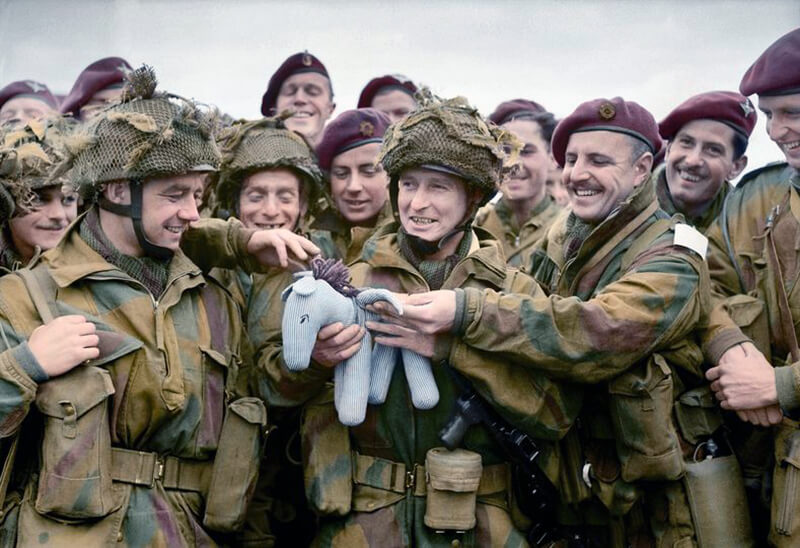
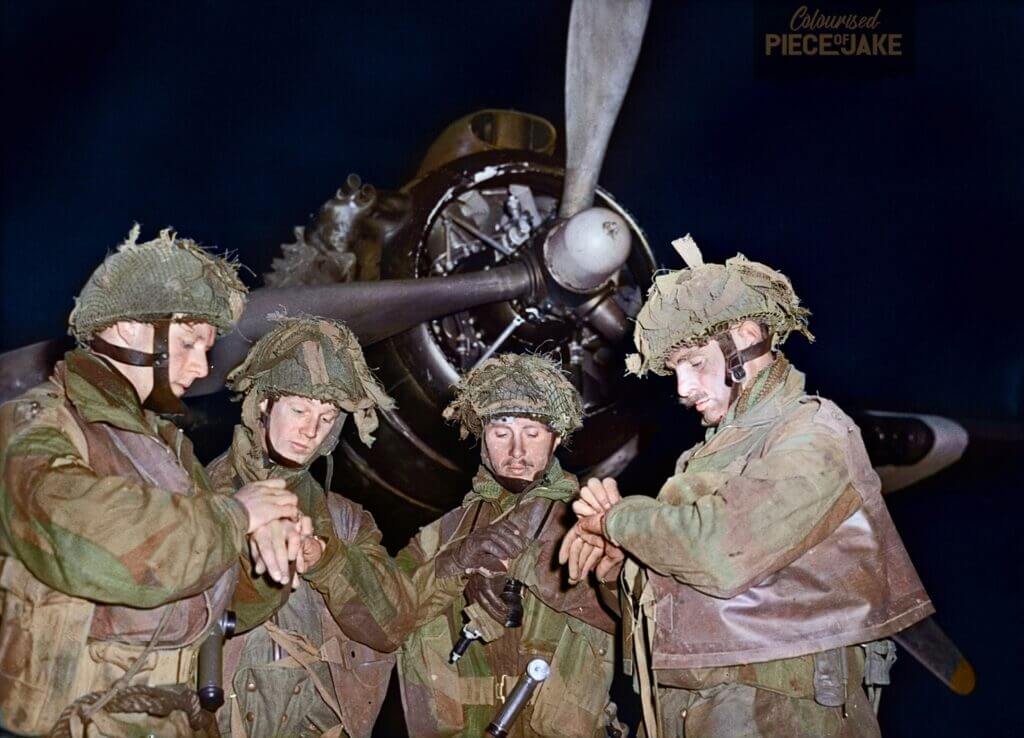
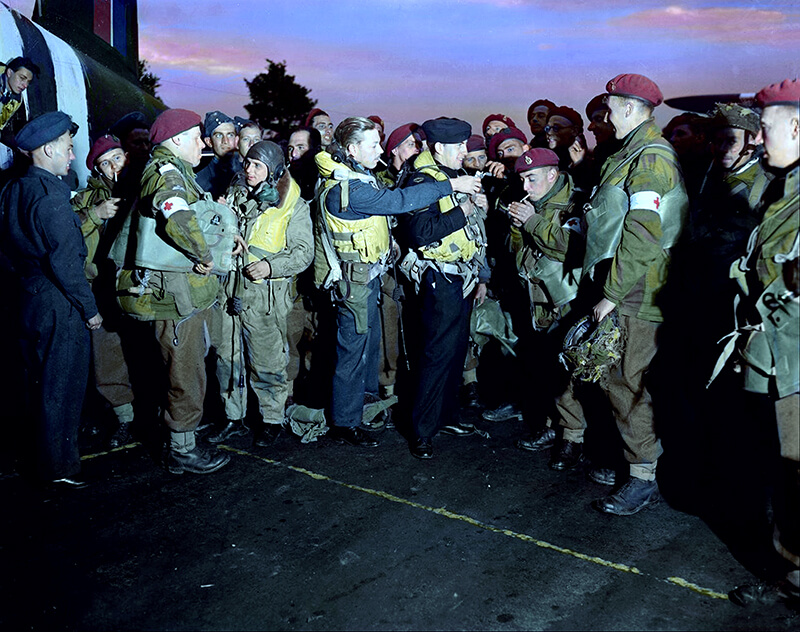
| 6th Airlanding Brigade |
